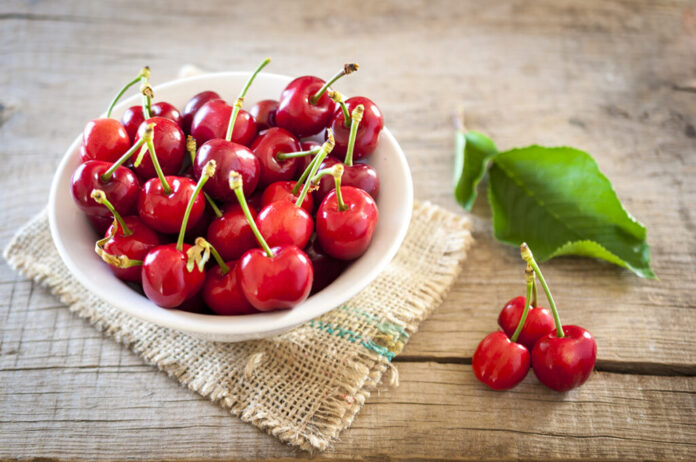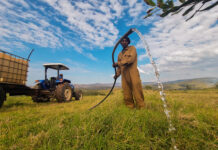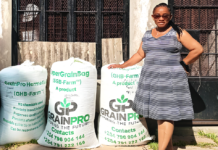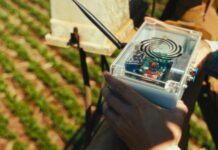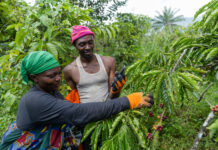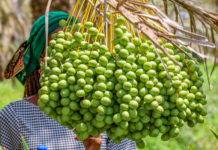Chile is the main player in the global cherry market. What are the keys to its success? Varietal innovation, training systems and post-harvest technologies. A new Macfrut Academy video lesson presenting this global case study went live last Thursday (14 March) and is available for on-demand viewing on the platform. The first of two episodes, entitled ‘The Chilean cherry: a successful supply chain’ focused on the in-field phase and included interviews with experts and growers to provide a comprehensive analysis of variety selection, agronomic techniques, sorting and commercial strategies.
As the journalist Maicol Mercuriali explained at the beginning of the video lesson, the cherry production area in Chile has increased from 3,200 hectares in 2000 to 62,000 hectares in 2022, and again to 65,000 hectares in 2023. This model is driven by exports, which account for almost 90% of production: in fact, exports rose from 103,000 tonnes in 2014-2015 to 415,000 tonnes in 2022-2023.
‘Cherry orchards are expected to increase by about 2,000-2,500 hectares per year,’ explains Carlos Tapia, founder and technical director of Avium, a company specialising in research and development for cherry production. ‘Although the last season was a difficult one, exports amounted to approximately 400,000 tonnes. The three strengths of the Chilean model are variety selection, training systems and post-harvest technologies, with three cherry varieties – Lapins, Santina and Regina – accounting for almost 80% of production. In the last four years, more than 50% of cherry orchards have been planted with the Santina variety.
‘Thanks to technological innovations, yields have increased from 7 to 9.5 tonnes per hectare,’ says Carlos Tapia. There have been significant innovations in two areas: rootstocks and planting systems: Colt is the most popular, followed by Gisela 12 and MaxMa 14. ‘These innovations have enabled the density per hectare to be increased to 1,200 trees per hectare, while six years ago it was 900 trees per hectare.’
Chile’s strategy has been to ‘invest in new varieties, focusing on high-quality fruit that also guarantees high productivity’, says Lorena Pinto, manager at Cherry Ana Chile. One of the most popular varieties is the Sweet series, developed in collaboration with the University of Bologna. To the surprise of local growers, Chile is the ideal habitat for this cultivar. Andrea Ravaioli, head of the University of Bologna’s Knowledge Transfer Office, explains: ‘The Alma Mater Sweet cherries are world famous and have achieved significant market penetration. They are a good example of how research can have a real impact outside the university.’ Lorena Pinto explains: ‘We identified the potential of cherries in the Sweet range, taking into account the differences in climate. Tests were carried out with the growers and we found that the fruit was firmer and had a higher Brix level than in Spain and Italy. We carried out a post-harvest analysis of the fruit during sea transport, and the results were excellent. So, in 2019 we launched these varieties on the market. We currently have cherry orchards planted with the Sweet Aryana variety, consisting of 2.4 million plants on 2,200 hectares, as well as Sweet Lorenz with 134,000 plants and Sweet Gabriel with 68,000 plants.
Exports play a central role in Chilean production, especially exports to the Chinese market. Juan Pablo Zoffoli, lecturer at the Pontifical Catholic University of Chile, says: ‘The Chinese market demands high-quality products, but is willing to pay a lot for quality. Not surprisingly, it differentiates between products in different quality classes. The fruit must be homogeneous when the crates are opened, which is achieved at the post-harvest stage by controlling the packaging system, the grading lines, the texture and sweetness of the fruit, as well as its acidity and aesthetic quality. In fact, in Chile, the fruit is harvested when it is perfectly ripe for consumption. Therefore, by the time it is harvested, it is approaching the end of its shelf life. This is why it is important to use a variety of technologies to extend the desired shelf life, especially during transport.’
Stefano Lugli, representative of the Plant Nursery Area at Macfrut 2024, provided technical advice for the episode. The upcoming video lesson will continue to concentrate on Chilean cherries, particularly their post-harvest journey.


